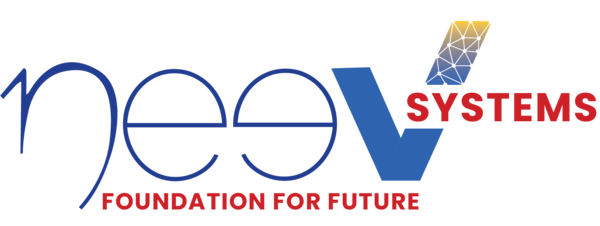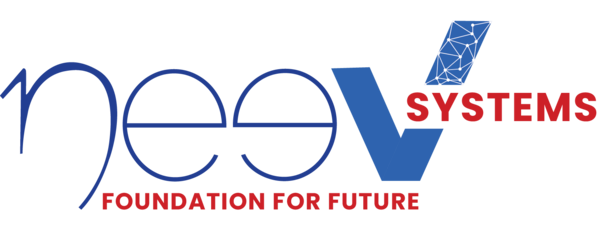For long, IT outsourcing revolved around two pivotal choices: enterprises could choose between Global Capability Centers (GCCs) that offer greater control and ownership or cost efficiency of IT Services Providers. However, an increasing number of businesses today are shifting toward a third option – Virtual Captives.
Envision a solution combining the best of both worlds—precisely what a Virtual Captive Center (VCC) promises.
Virtual captives represent a paradigm shift, allowing businesses to leverage the best features of both outsourcing models. VCCs function as a hybrid business model, delivering value-added services while cutting costs.
Today, VCCs are fast emerging as the standard IT outsourcing model, empowering enterprises to achieve agility and scalability like never before.
Understanding Virtual Captives: How Do They Work?
Virtual captive centers involve a strategic partnership between a company and a third-party vendor.
Unlike global capability centers, which establish a distinct legal entity or physical presence at an offshore location, the company outsources specific business functions or processes to a third-party service provider (VCC). The service provider sets up a dedicated offshore development center with the necessary technical infrastructure, talent, and office resources.
What sets Virtual Captives apart is the strategic advantage they offer. While the service provider manages administrative and legal aspects, the company maintains complete control over operations, dictating processes, workflows, and quality standards. In this sense, the VCC becomes an extension of its own business operations, offering a balanced blend of outsourcing efficiency and in-house control.
Initially, VCCs solely aimed to achieve cost arbitrage over the traditional outsourcing model. But now, they function as an integral part of the parent company, driving business-critical processes, delivery, and innovation.
Explore the differences between VCCs and GCCs to understand which will better suit your business needs. Read More.
Understanding the Agile Enterprise
Agile enterprise growth extends beyond agile methodologies within development teams to encompass the entire organization. At its core, business agility means the ability to respond promptly to market changes, customer demands, and technological advancements.
The key elements of enterprise agility include smaller cross-functional teams, iterative development cycles, and increased focus on actionable metrics. Agile organizations can streamline processes, improve decision-making, and accelerate innovation by fostering communication, collaboration, and alignment across various departments such as HR, legal, finance, marketing, and engineering.
In today’s fast-paced business landscape, agility is essential for several reasons –
- It enables enterprises to stay competitive by swiftly adjusting strategies and operations in response to market trends and customer preferences.
- Agile operations help companies seize new opportunities and capitalize on emerging technologies, driving innovation and shortening delivery cycles.
- Agile enterprises are better equipped to navigate uncertainties and disruptions, ensuring resilience in the face of challenges.
This adaptability helps companies keep pace with rapid shifts in their business and IT ecosystems and improve CX by delivering solutions that address customer needs and preferences.
Challenges that impede business agility
Businesses adopting agile practices in-house often face these common challenges –
Managing Multiple Teams
Coordinating efforts and managing dependencies among multiple teams is a dominant challenge further complicated by geographic dispersion and different time zones.
Training and Skill Development
Implementing agile strategies requires ongoing investment in training and upskilling, which increases the company’s expenses. If all team members aren’t well-versed in agile principles, they cannot successfully implement plans.
Tools and Infrastructure
Finding appropriate tools and infrastructure to support agile practices at scale can be difficult. Tools for project tracking, continuous integration, and automated testing are essential but may not be readily available or compatible with existing enterprise systems.
Change Management
Enterprise agile is a transformation of business operations, culture, and mindset. Effective change management is crucial to ensure a smooth transition, minimize disruption, and gain buy-in from all stakeholders.

Unlock Agility with Our VCC Model
The Role of VCCs in Promoting Enterprise Agility and Scalability
Over the years, India’s VCC market has witnessed significant expansion. Today, most offshore centers have expanded operations to more than three cities in India, and nearly half of enterprises with a substantial offshore presence in India have adopted a two-country offshore location strategy, and rightly so.
VCCs can reduce your IT budget by up to 50% compared to onshore operations and up to 25% from traditional outsourcing!
Virtual captives can play a pivotal role in promoting enterprise agility and scalability by addressing key challenges related to enterprise agile implementation:
Rapid Adaptation to Market Changes
The VCC model gives businesses access to flexible talent pools. By leveraging resources and expertise from lower-cost locations, companies can enhance their market responsiveness and achieve significant cost savings.
Scalability and On-Demand Resourcing
VCCs facilitate scalability by offering on-demand access to skilled resources. Unlike traditional outsourcing models, companies can quickly ramp up or downsize their operations based on business requirements. This flexibility promotes efficient resource management and cost optimization.
Efficient Operations Management
In a VCC model, the parent company retains considerable operational control and oversight, calling all the shots. While they can define the processes, quality standards, and intellectual property, the VCC takes charge of all legal and administrative operations. This division of responsibility mitigates risks (legal and regulatory compliance) associated with market expansion in foreign locations while enhancing operational efficiency.
Access to Specialized Talent
By tapping into the talent pool available in offshore locations, VCCs enable companies to access specialized skills. They can hire resources who are well-versed in the language and culture of the offshore location, thereby ensuring seamless operations and bridging geographical and cultural barriers. This allows companies to achieve high employee productivity and greater customer satisfaction.
Best Practices for Leveraging a VCC’s Capabilities
Selecting the Right VCC Partner
Begin by doing the due diligence to evaluate potential VCC partners based on their expertise and track record. When selecting a VCC partner, consider factors such as location, infrastructure, talent pool, and regulatory compliance. It’s best to choose a partner offering a range of services with adequate experience in your domain to ensure they meet your project needs and business goals.
Establishing Effective Communication Channels
It is crucial to collaborate and communicate clearly with your VCC partner to ensure alignment of goals and expectations with the services offered. Clearly define the roles, responsibilities, and escalation procedures for streamlined decision-making and prompt issue resolution. Conduct regular meetings with relevant stakeholders from both sides and leverage collaboration tools so that everyone is on the same page.
Managing Remote Teams
For companies engaging in offshore operations, managing remote teams effectively is often challenging. However, implementing robust project management methodologies and the right tools can help track the productivity and progress of remote teams. Also, providing ongoing support, training, and resources to remote employees can increase workplace engagement and productivity.
Ensuring Regulatory Compliance
Business leaders must stay informed about local regulations and compliance requirements in the offshore location where their VCC partner is based. They can ensure all operations are compliant with local and international standards by regularly auditing and modifying internal processes and workflows.
Monitoring Performance and Quality
Establishing key performance indicators (KPIs) and metrics forms the basis of measuring performance and the quality of services delivered by the VCC. Conduct regular performance reviews and audits to evaluate performance, track progress, and identify areas for improvement. A continuous feedback loop helps the VCC partner stay on the right track while maintaining high operational standards.
Redefine Your Business Operations with Our VCC Model
The modern business landscape is immensely competitive, and businesses seeking to stay relevant in the long haul must be ready to quickly adopt and adapt. Many companies struggle to balance costs while maintaining optimal efficiency through in-house teams. Usually, in-house teams cannot optimally manage all operations due to resource constraints or lack of specialized expertise, and that’s where virtual captive centers can help.
Virtual captive centers improve market responsiveness, provide access to specialized talent pools, and efficiently manage remote teams while giving the reins of operational control to the parent company. However, choosing the right VCC partner is key to gaining competitive advantage and achieving scalable business growth.
Explore the real-world testimony of our VCC model’s success.
Stay ahead of your competitors and drive innovation with our cost-efficient VCC model. Book a free consultation with an expert today! Talk To Us.
Our flexible VCC model combines the best aspects of global capability centers and IT service providers. While you retain full control over processes, workflows, and quality standards, we ensure these are executed according to your expectations. Our experts operate as an extension of your internal team to maximize efficiency and improve overall performance. Additionally, we enable you to scale the team up or down according to your requirements, ensuring optimal resource allocation at all times.

Unlock Agility with Our VCC Model
Empower your business with a flexible, scalable Virtual Captive Center solution.

Sitaram Pothula
With 22+ years of IT experience, Sitaram combines technical expertise with strategic leadership. He has led engineering teams and delivered solutions across BFSI, telecom, and healthcare. Sitaram excels in aligning technology with business goals to drive innovation and efficiency.


